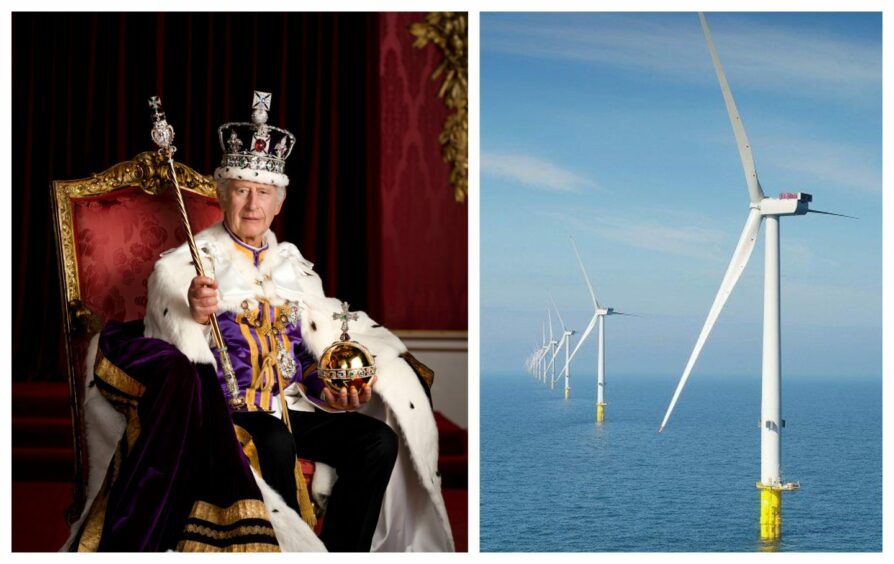
New legislation boosting the borrowing powers of the Crown Estate (CE) could allow it to allocate up to £400million over the “short to medium term” to accelerate the delivery of offshore wind projects.
The Crown Estate Bill will enable the UK monarch’s estates to contribute between £200m – £400m in enabling infrastructure assets, particularly those that will unlock “strategic bottlenecks” affecting offshore wind.
This comes following the announcement that the body that owns the UK sovereign land portfolio, including swathes of the seabed, will join forces with the UK government’s proposed Great British Energy drive up to £60billion in investment into the sector.
The Crown Estate published its Future of Offshore Wind report outlining its leasing strategy alongside its Marine Delivery Routemap which offers a “vision for the UK seabed”.
Speeding up
As progress towards the establishment of GB Energy is made, CE said it was “exploring further opportunities to invest in order to de-risk, keep pace and accelerate offshore wind projects in the development phase”.
Investment will be aimed at addressing the “significant revenue uncertainty and volatility” as plans for the sector take shape.
Concerns have been raised that investment on offshore wind needs to be sped up to meet targets for 2030 and beyond.
In a statement the body said: “The Crown Estate has an established track-record, across its 260 years, of taking a long-term approach to creating lasting and shared prosperity, which means that we are prepared to accommodate short-term volatility in order to realise long-term value for the benefit of the nation.
“We will be looking to secure long-term commercial returns as a co-investor working with aligned partners and to also generate wider impact from these investments including the potential to support jobs, catalyse urban and coastal regeneration, and drive economic growth as well as facilitate accelerated deployment of offshore wind.
“In addition, The Crown Estate has geographic flexibility to invest into suitable offshore wind-adjacent infrastructure assets across England, Wales, Northern Ireland and
Scotland.”
The passing of The Crown Estate Bill, which recently had its second reading in the House of Lords will “modernise the Crown Estate’s investment powers” and will also give the body “greater flexibility in and using different structures to deliver responsible financial returns from those investments”.
GB Energy chair Juergen Maier said the partnership between crown and state would “write the next chapter of the UK’s renewable energy story”.
He said: “There is a huge prize on offer and by bringing together Great British Energy’s strategic industrial policy with the Crown Estate’s internationally recognised expertise and management of the seabed, we can ensure Britain continues setting the pace for global offshore wind.
“This will be backed by £8.3 billion of new money for Great British Energy, alongside new borrowing and investment powers for the Crown Estate which are currently being brought forward in Parliament.
“To achieve our goals, we need to push ourselves to move faster and work harder to reach our net zero targets, unlock investment and support the growth of local supply
chains.”
He added the Future of Offshore Wind report “marks an exciting step towards unlocking the next 20-30GW of offshore wind pipeline”.
He said: “Not only does it plot a course to bringing this new capacity to market by 2030, it sets out a number of important proposals to accelerate and de-risk the process
for developers and maintain the attractiveness of the UK market for international investors.”
Mapping the increasingly busy seabed
CE’s seabed routemap will support identification of spatial pathways for investment in grid, cabling and pipeline infrastructure towards 2050, as well as identify optimal sites for future offshore renewables in the context of nature and “all marine sector needs”.
The North Sea Transition Authority has previously likened the increasingly competing interests of subsea oil and gas infrastructure, wind turbines, cables and moorings, subsea carbon stores as well as “vital interests” like fishing, defence, and aquaculture as an “offshore energy Rubik’s cube“.
As recommended in the Electricity Network Commissioner’s 2023 review, CE’s routemap will also “underpin timely investment in grid connections”.
CE added that while the report only covers England, Wales and Northern
Ireland, the body said it will “work closely” with its counterpart, Crown Estate Scotland, on “areas of shared interest, such as transmission cable routes and sharing of valuable data which can help de-risk development”.
Energy secretary Ed Miliband said the sustainability of the seabed was “critical to securing the UK’s energy independence”.
He added: “That’s why the Crown Estate is uniquely placed with its Marine Routemap to help accelerate the delivery of clean energy off our shores – boosting the growth of new industries while protecting the environment.
“This will be supported by our ground-breaking partnership between the Crown Estate and Great British Energy, which has the potential to help leverage up to £60 billion investment in our clean power mission, create the next generation of skilled jobs and a brighter future for our country.”
RenewableUK chief executive Dan McGrail said: “Providing long-term visibility on the details of future offshore wind leasing rounds as early as possible will help to further increase confidence in the long-term stability of the UK’s world-leading offshore wind market, potentially leading to billions of pounds of additional private investment in the decades ahead.
“The Crown Estate’s role is evolving significantly and the vision set out in its Future of Offshore Wind report will help all partners to work together more closely to make the most of our terrific marine resources, as well as enabling the industry to ramp up the delivery of vital new projects faster.”
Recommended for you


 © Supplied by PRESS AND JOURNAL
© Supplied by PRESS AND JOURNAL